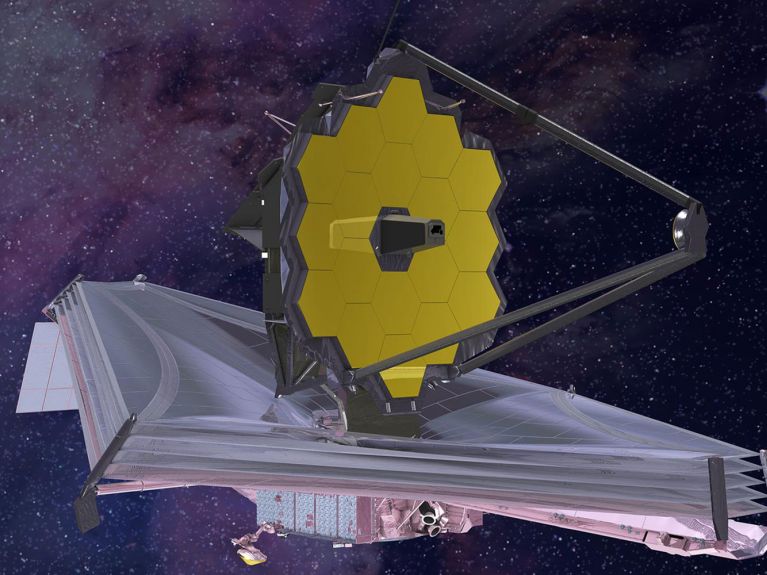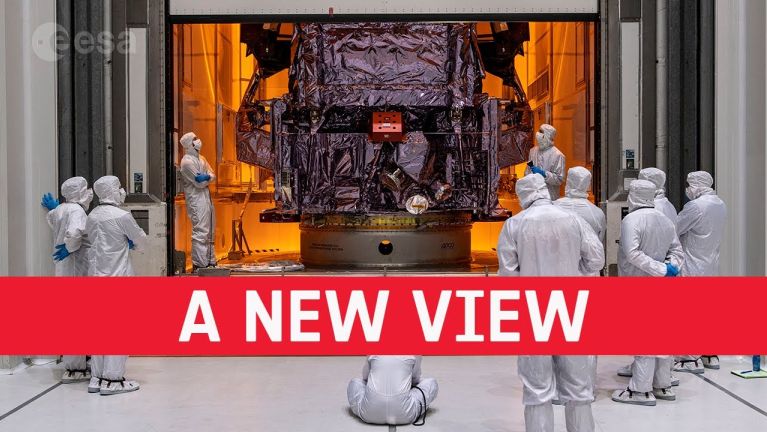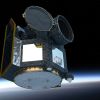An insight into new dimensions
Being a joint American-European project, the James Webb Space Telescope also uses cutting-edge German technology in space.

The second weekend in February 2022 saw the James Webb Space Telescope send its first image back from space. The grainy black-and-white selfie shows the telescope’s 18 mirrors but gives no clue as to the device’s extraordinary capabilities. The James Webb Space Telescope is regarded as the successor to the Hubble Telescope, which has been floating through space for over 30 years and has been repeatedly causing quite a stir with its spectacular images – of merging galaxies, for instance.
What is the James Webb Space Telescope?
The James Webb Space Telescope, which was launched into space on 25 December 2021 by a European Ariane 5 rocket, eclipses all of its predecessors in terms of size and performance. It was developed with the aim of revealing hidden parts of our universe: stars in dust clouds, molecules in the atmosphere of other worlds, and the light from the first stars and galaxies. The telescope is intended to fundamentally expand our knowledge of astronomy: about the solar system and about the way in which stars, planets and galaxies emerge and develop. Development of the joint international project was led by the American space agency NASA in collaboration with its partners in Europa and Canada, the ESA and the CSA.
Dieses YouTube-Video kann in einem neuen Tab abgespielt werden
YouTube öffnenThird party content
We use YouTube to embed content that may collect data about your activity. Please review the details and accept the service to see this content.
Open consent formWhat is Germany’s role in the James Webb Space Telescope?
Numerous experts from Germany have been involved in developing and operating the James Webb Space Telescope. Several German companies and research institutions, such as the Max Planck Institute for Astronomy in Heidelberg and the University of Cologne, are contributing to the mission. The European firm Airbus built the instrument NIRSpec in Ottobrunn and Friedrichshafen. Its main purpose is to detect the infrared radiation from the first galaxies that formed shortly after the Big Bang. Another joint international project is the Mid-Infrared Instrument (MIRI), in which for example the Max Planck Institute for Astronomy is playing a leading role. The instrument is sensitive enough to detect a candle on one of Jupiter’s moons.
Dieses YouTube-Video kann in einem neuen Tab abgespielt werden
YouTube öffnenThird party content
We use YouTube to embed content that may collect data about your activity. Please review the details and accept the service to see this content.
Open consent formWhat is to happen next with the James Webb Space Telescope?
The James Webb Space Telescope will gather research data over a period of at least ten years, and ideally even a lot longer. The team responsible for the telescope hopes that its infrared technology will provide them with some groundbreaking insights. Talking about planetary observation in an interview before the mission started, ESA Director of Science Günther Hasinger from Germany explained: “In visible light we cannot see planets that are close to their star due to their insufficient relative brightness. However, James Webb allows us to observe in the infrared range, where stars do not shine so brightly and planets are fairly bright. I therefore expect us to learn a great deal about some fascinating candidates that could be warm and inhabitable on account of their proximity to their star.”




